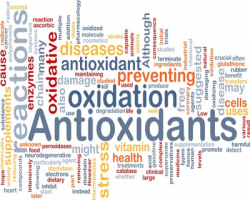- Home
- Editorial
- News
- Practice Guidelines
- Anesthesiology Guidelines
- Cancer Guidelines
- Cardiac Sciences Guidelines
- Critical Care Guidelines
- Dentistry Guidelines
- Dermatology Guidelines
- Diabetes and Endo Guidelines
- Diagnostics Guidelines
- ENT Guidelines
- Featured Practice Guidelines
- Gastroenterology Guidelines
- Geriatrics Guidelines
- Medicine Guidelines
- Nephrology Guidelines
- Neurosciences Guidelines
- Obs and Gynae Guidelines
- Ophthalmology Guidelines
- Orthopaedics Guidelines
- Paediatrics Guidelines
- Psychiatry Guidelines
- Pulmonology Guidelines
- Radiology Guidelines
- Surgery Guidelines
- Urology Guidelines
New artificial antioxidant is The supplement of future

Andrea Baschieri at Department of Chemistry “G. Ciamician”, University of Bologna, Italy and colleagues have discovered an artificial antioxidant that is more effective than its natural counterpart and can be used in a host of diseases.
It is TEMPO, a well-known artificial anti-oxidant which is up to 100 times more powerful than nature's best and could help counteract everything from skin damage to Alzheimer's Disease. The researchers have published findings of the study in the Journal of the American Chemical Society.
While the body already has its own chemical defenses against free radicals through vitamin C and vitamin E, Gino DiLabio, Chemistry Professor, University of British Columbia, Kelowna, Canada, and colleagues wanted to know how a human-made anti-oxidant called TEMPO would perform.
Based on the study, they reported a novel co antioxidant system based on TEMPO (2,2,6,6-tetramethylpiperidine-1-oxyl radical) that, in biologically relevant model systems, rapidly converts chain-carrying alkylperoxyl radicals to HOO·
Free radicals are highly reactive molecules that are naturally present in the body and are created during routine natural processes like breathing, according to DiLabio.
"Free radicals are a natural part of human metabolism. But when our bodies have too many, like when we're exposed to UV radiation from the sun, when we smoke, or even when we drink alcohol, it can be a problem," says DiLabio. "These extremely reactive molecules can damage cells or DNA and can contribute to many different diseases, like Alzheimer's, and some researchers think they may even be responsible for aging."
Also Read: New antioxidants may reduce risk of second heart attack : JACC
For the study, the researchers used a mimicked cell environment to test how effective TEMPO was in converting free radicals to non-harmful molecules compared to vitamin E.
"We were surprised to learn that TEMPO was up to 100 times faster at converting free radicals than vitamin E in fatty environments," says DiLabio. "That means that it could be a particularly effective means of protecting skin tissues or even the walls of cells from radical damage."
Dilabio says that the study may lead to the development of a pharmaceutical therapy to help prevent free radical damage.
"I could see this leading to the development of a topical cream to protect your skin after exposure to the sun or even a pill that could protect your neurons from getting damaged. The possibilities are very exciting."

Disclaimer: This site is primarily intended for healthcare professionals. Any content/information on this website does not replace the advice of medical and/or health professionals and should not be construed as medical/diagnostic advice/endorsement or prescription. Use of this site is subject to our terms of use, privacy policy, advertisement policy. © 2020 Minerva Medical Treatment Pvt Ltd